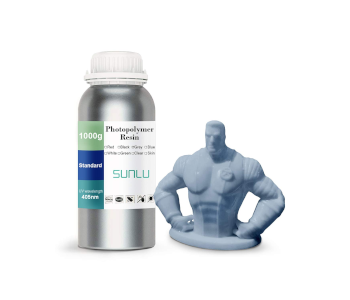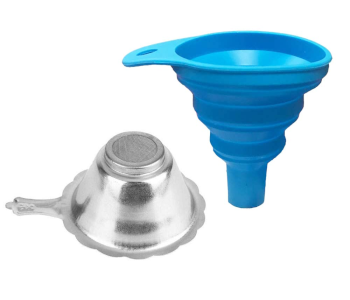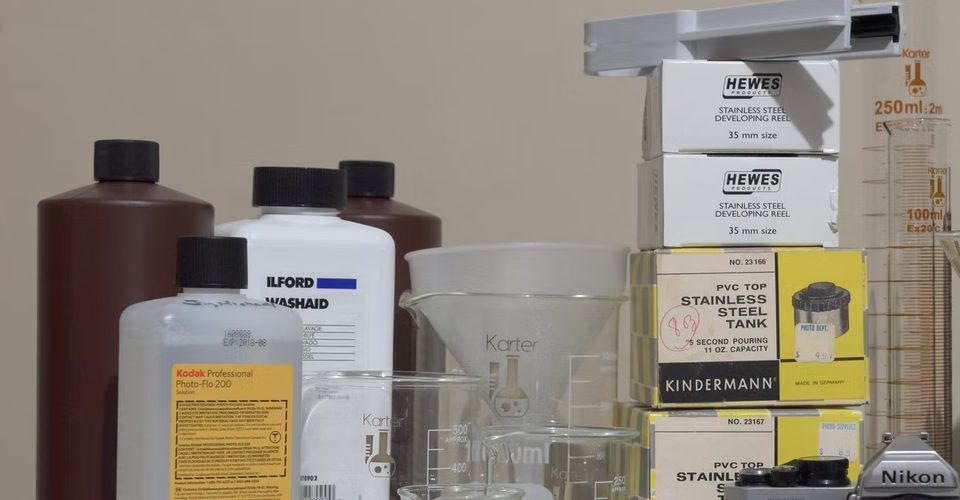FAQ: Storing, Reusing, and Disposing 3D Printing Resin
Filament-based 3D printers used to be the default 3D printing technology for home-based or casual users. However, resin printers have become a lot more common in the last few years. Nowadays, there are lots of options for desktop-scale resin printers that are fairly affordable and easy to use.
One of the oft-mentioned complexities of using a resin printer is handling the resin. There’s a good reason for this – photopolymer resin is a toxic compound, after all. Check out this FAQ on matters related to resin handling, storage, reuse, and disposal.
What are the essentials for resin handling?

Before you jump into resin printing, there are a few critical pieces of protective equipment that you will need. Keep in mind that 3D printing resin is a toxic compound and should be kept out of reach of pets and children. It is very harmful and can cause permanent damage if it is ingested or comes in contact with the eyes.
3D printing resin is also considered an irritant if it comes in contact with the skin. Skin contact can cause rashes to develop, or an allergy if prolonged or chronic contact is not mitigated. The resin also naturally generates fumes that can irritate the respiratory system.
With these in mind, you must always have equipment that protects your eyes, hands, and respiratory system whenever you work with resin. The bare minimum is to wear protective goggles and nitrile gloves. Respiratory protection typically isn’t necessary, but you should always work in a room with good ventilation. At the very least, having two windows open is ideal.
Photopolymer resin is only considered toxic when it is uncured. Keep this in mind when you need to handle a partially cured or “green” print fresh from your 3D printer. This is also essential knowledge for when you need to dispose of excess or waste resin.
How should resin be stored?
If you have lots of leftover or stock resin, you will want to make sure that they are properly stored and ready for use when you need them. It’s best to contact the manufacturer for proper storage guidelines but there are general rules that you can follow.
The best containers for resin storage are those that the resin was originally shipped in. These are opaque and UV-resistant bottles that prevent the resin from reacting. The ideal temperature range for storage is between 5 °C to 30 °C (41 °F to 86 °F). Outside of these temperatures, the deterioration of the resin will be accelerated. It is also considered good practice to shake your resin bottles every two weeks to keep them thoroughly mixed.
Take note that resins have a limited shelf life. If you have a lot of resin stock, try and use the oldest bottles first. The expiration date of the resin should be printed on each bottle. This is typically about a year after production, but figures may vary based on brand and resin type.
Is it fine to leave uncured resin in the 3D printer vat?
When printing with resin, you will inevitably end up with excess uncured resin in the printer’s resin vat. For this reason, most 3D printers come with UV-proof lids that you can use to protect the leftover resin from UV radiation.
If you have leftover resin in your vat that you plan to use later, just cover it with the lid and keep it in a spot that is not exposed to sunlight. A cool, dark room is ideal for this purpose. Under ideal conditions, the uncured resin can be kept in a vat for up to 2 months without deterioration. If the resin cannot be kept away from direct sunlight, it can become unusable in as little as two days.
Keep in mind that the standard practice for resin storage still applies here. Aside from keeping the vat away from sunlight, the ideal temperature should be maintained. If the resin is going to be stored for a long time, it has to be shaken every 2 weeks. It is also a good idea to shake the resin vat thoroughly just right before use to ensure good fluid consistency.
Can unused resin be returned to their containers?

Some people prefer to pour out uncured resin from the 3D printer resin vats into their respective containers. This could be better for long-term storage or if you need to change to another type of resin.
The basic rule of thumb for this practice is to not mix old and new resin in one container. If you’re keeping uncured resin, keep it in its separate container to avoid contamination. Labeling these containers properly is also critical, as the leftover resin will unavoidably have a shorter shelf life. Even when kept in a container, it is still best to use uncured resin within two months.
Be sure to use the uncured resin through a filter before storage. This gets rid of any fragments of resin that may have been cured during the 3D printing process. You can get a special strainer kit that is designed exactly for this purpose that is made of silicone and metal parts.
If you don’t have spare resin bottles lying around, a good alternative is a cheap drinking bottle made of aluminum. Make sure that the bottle is sufficiently airtight to prevent leakage of fumes. Using a plastic bottle is not advisable, as resin can react with some plastics.
How should a 3D printer resin vat be cleaned?
After transferring uncured resin to a container, the next order of business would be to clean the resin vat. To do this you will need a plastic scraper, nitrile gloves, some paper towels, and isopropyl alcohol.
Wear the nitrile gloves, remove the tray from the 3D printer, and carefully transfer the leftover resin through a filter and into the container.
After pouring the uncured resin into a container, you have to use the paper towels to absorb any traces of the resin in the vat. The best way to do this is to just dab the towels on the container. The FEP film at the bottom of the vat is highly prone to abrasion, even if you just wipe it with paper towels. Repeat this as many times as necessary until there is no longer any liquid resin.
At this point, you will end up with a pile of paper towels soaked with resin. Make sure to dispose of these according to proper resin disposal methods.
In some cases, there may be a layer of hardened resin on the surface of the vat. The first thing to do is try to dislodge these with your fingers. You can also try pushing the FEP film inwards to attempt to remove the hardened layers. If these methods don’t work, the last resort is to use the plastic scraper. Be very careful when doing this to avoid leaving scratches on the FEP film.
Using isopropyl alcohol is another “last resort” solution that you can use if there is any hardened resin that you can’t remove. Try and put a few drops on the hardened resin to make them easier to pry loose.
How should 3D printing resin be disposed of?
Proper disposal is one of the first few things that you need to learn once you go into resin 3D printing. As mentioned, uncured photopolymer resin is toxic and is very harmful both to organisms and the environment.
If you have any waste resin, the proper thing to do is to fully cure them before disposal. The best and cheapest way to do this is to simply expose the resin to direct sunlight until they have fully hardened. This rule also applies to resin bottles, nitrile gloves, paper towels, and the isopropyl alcohol solutions that are used to clean green prints.
Final thoughts
Proper resin handling is one of the critical pieces of knowledge that you need to learn once you start with resin-based 3D printing. Unlike filaments, photopolymer resin has lots of special needs from handling and storage to disposal.
If you know what you’re doing, you can make the most out of your resin, and even reuse it if necessary. This does take a bit of extra work, but if you can get over the learning curve of handling resin, you can be rewarded with much more detailed 3D prints. Resin printers aren’t necessarily more difficult to use – you will just need to learn a few new tricks.


